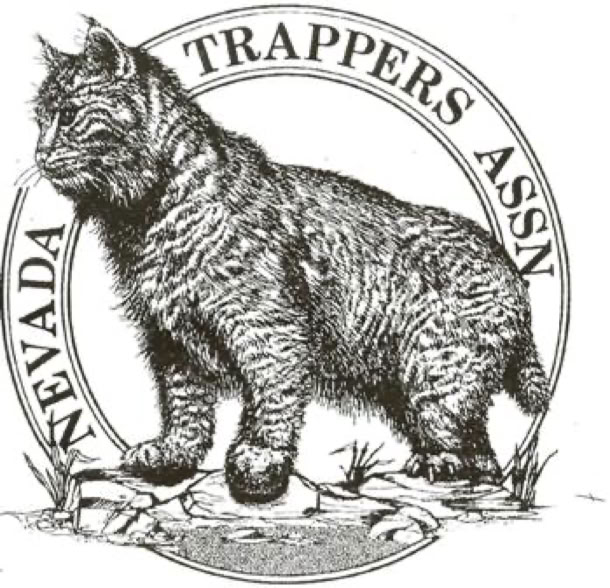PROMOTING SOUND FURBEARER MANAGEMENT
Nevada Trappers Association

The Fur Industry in Nevada
On Monday, September 22, 1828, Peter Skene Ogden, Chief Trader for the Hudson Bay Company left Fort Nez Perces on the banks of the Columbia River in Washington State for the start of his 1828-29 Snake Country exploration. Ogden’s instructions were to strike deep into the Snake Country, which meant any part of the area that might seem attractive to Americans and devastate the country as far as beaver supply was concerned. It was sort of a scorched stream policy designed to denude the country and render it unprofitable and hence unattractive to Americans. Hudson’s Bay policy did not change during Ogden’s years as Snake brigade leader. American trappers of course were actively engaged in the same type of program. The result was a “cold” fur war with the whole Pacific Northwest as a potential prize.
Being his fifth expedition in the Northwest, Ogden set his sights on the vast unexplored region south of Malheur Lake, east of the Sierra Nevada Mountains, and west of Great Salt Lake. He could not know it at the time, but his would be the first major penetration into the heart of the Great Basin. Ogden had picked up Indian rumors regarding possible beaver streams far to the south.
On October 29, 1828, Peter Ogden and his company of trappers crossed the forty-second parallel in the vicinity of present day Denio, and became the first white trappers in the State of Nevada. On November 8, 1828, the present day Humboldt River was discovered in the vicinity of Winnemucca. For nearly 11 months, the Hudson Bay Company trapped the Humboldt River and tributaries returning to Fort Nez Perces in July of 1829 with a catch of about 4,000 beaver.
Very little trapping activity was documented from the 1830s until the discovery of gold throughout the State in the mid 1850’s. As settlements were established and the livestock industry boomed, more and more accounts of trapping and predator control were reported in the local newspapers. Scalp bounties were paid for coyotes and wildcats, however, selling of pelts were also reported. It appears from many newspaper accounts in the 1860s and 1870s that red fox may have been fairly common in portions of the State. The Reese Reveille newspaper in Austin reported numerous accounts of red fox being trapped. On February 15, 1870 they reported “We were shown today by Mr. Riotte a collection of pelts of foxes, coyotes and wild cats, which had been trapped and brought in by Indians. The trap used was the Newhouse, which the Indians are soon taught to employ skillfully and with advantage. In the collection we observed two types of fox – the large red fox, inhabiting the mountains and frequently stretching out from tip to tip five feet six inches, and the small pretty, grey, red-flanked fox of the valley. Both of these furs may be converted into handsome and useful robes”.
From Peter Ogden’s reports through the Gold Rush days, numerous accounts documented the complete absence of beaver and otter in Nevada’s western river systems. Data documenting the existence of muskrat in Nevada’s western marshes are also lacking, however all of the other furbearing species presently distributed throughout Nevada were found during the 1800’s.
Several reports from the Elko Independent newspaper from 1870 to 1875 reported a strange critter inhabiting the mountains of northeastern Nevada. A report on February 9, 1870 reported ‘Mr. Lair’s death which was attributed to a strange animal which has made its appearance in flocks in the Bruneau district. The whites in that district have given them the name of man-eaters.’ On February 20, 1875 the newspaper reported: “Man-Eaters – James Thompson who lives in the vicinity of Cornucopia brought in from that location on Monday a pair of hybrids which are occasionally found in portions of the State. The male will probably weigh sixty pound and is in color like that of a grizzly which he bears some resemblance to, in form, disposition and appetite. Not being way up in zoology, we have been obligated to accept the name given by the hunters, “man eater,” but are at a loss to account for the manner in which they have acquired so distinguished a reputation. If we were permitted to judge from the general appearance of the quadruped we should conclude that such a result might be produced from a cross between a grizzly bear and an Indian badger.” Whatever these critters were that roamed the northeastern portion of the state is anybody’s guess. All we know is no one has brought one of these to the Nevada Fur Sales during the past 40 years.
4170 ST. CLAIR ROAD, FALLON, NV 89406
© NEVADA TRAPPERS ASSOCIATION